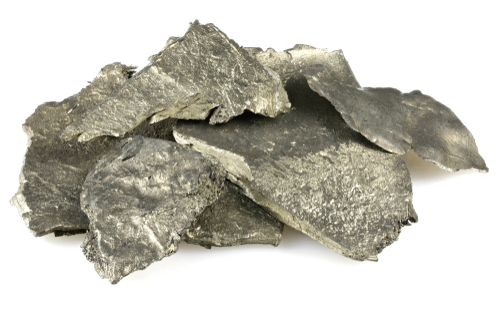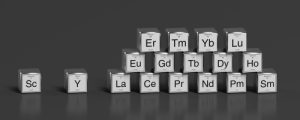
The term “rare-earth metals” is now cited almost daily by the popular media. But, just how much do you know about rare-earth metals? Here’s a concise layman’s guide on all you will probably ever need to know about the subject:
Terminology
Rare-earth metals are more correctly known as rare-earth elements. And, for the exact-minded, they could be even more properly referred to as rare-earth oxides. However, within the industry they are most commonly tagged as “rare-earth products” or sometimes just “rare-earths”. Thus, the terms: rare-earth metal, rare-earth element, rare-earth oxide, rare-earth product and rare-earth, all mean exactly the same thing.
A Brief History
It might be surprising to find that the first rare-earth was discovered as early as the late 18th century. That was Ytterbium which was found in a quarry near the Swedish village of Ytterby on the island of Resarö in 1787. The element was obviously named after its place of discovery. By 1842, a total of five rare earths had been unearthed but the sixth took another 30 years to find. The most recently discovered rare-earth element is promethium which was found in 1944. A by-product of uranium fission, it was first produced in a nuclear reactor in Oak Ridge, Tennessee.
The Rare Earth Group
The rare-earth group consists of the 15 chemical elements known as lanthanides, plus yttrium and scandium. The latter two elements are included in the group because they occur in the same mineral deposits as the lanthanides and have similar chemical properties. The 17 elements appear almost identical, taking the form of lustrous silvery-white soft heavy metals.

Photo Credit: FoxPictures/Shutterstock.com
The 17 rare-earth elements are: lanthanum (La), cerium (Ce), praseodymium (Pr), neodymium (Nd), promethium (Pm), samarium (Sm), europium (Eu), gadolinium (Gd), terbium (Tb), dysprosium (Dy), holmium (Ho), erbium (Er), thulium (Tm), ytterbium (Yb), lutetium (Lu), scandium (Sc), and yttrium (Y).
How Rare Are Rare Earths?
You might think that given their name, rare-earth metals are as scarce as hen’s teeth. However, as it turns out, almost all rare-earth metals are just not that rare. The most abundant rare-earth is cerium, which is the 25th most abundant of the 94 of the earth’s naturally occurring elements. This means that cerium is almost on par with copper in its plenitude. The exception within the group is promethium which is radioactive, highly unstable, and a very scarce element.
The applied term “rare” describes the physical deposition of these elements rather than their abundance. Thus, they are almost never found in large, concentrated deposits of their own. Rather, they are most commonly found thinly deposited among other elements, thus proving expensive to mine. However, on the plus side, a number of rare-earths will often be found together at the same location.
Uses of Rare Earths
Rare-earth elements have a wide variety of industrial applications, which includes uses in the electronics, renewable energy, aerospace, automobile and defence industries. Their single largest application is in the manufacture of permanent magnets which accounts for well over 40% of their total use. These magnets are essential components in the likes of cell phones, televisions, computers, automobiles and wind turbines, as well as many other products. Fighter jets require around 0.4 tonne of rare-earths, while a modern military submarine would typically need up to 4 tonnes in its production.

Photo Credit: Albert Beukhof/Shutterstock.com
Rare Earth Mining
In 2022, China mined around 70% of the total global rare earth oxide extraction of 300,000 tonnes. The world’s biggest deposits of rare earths are to be found in Inner Mongolia. The second biggest miner by country, the USA, produces some 14% of the global total, and Australia around 6%. Most experts predict that the soaring global market for rare earths will see production triple by 2035.
Header Image Credit: Bjoern Wylezich/Shutterstock.com





